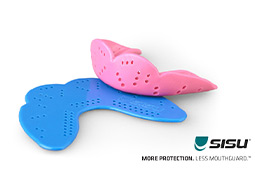Doubling as a badge of honor, soreness is physical proof that you really pushed yourself and got out of bed for a workout. It might be normal for newbies to experience soreness after their first trip to the gym but for veterans that swear by the "no pain, no gain" mindset might want to reconsider.
That’s because muscle soreness actually stems from microscopic muscle damage. This means the muscle needs to recover before it can at optimal capacity. Working out while sore also increases your susceptibility to tears and serious tissue damage. Put down your gym bag and sneakers if you are experiencing any one of these seven signs:
Getting out of bed becomes extra hard
Not that getting out of bed is easy to begin with but if you are experiencing extra difficulty to lift yourself out of bed, sit down or stand up after an intense leg workout, you need to take note. This is the body's way of telling you that it isn't ready for another workout and needs more rest and some stretching.
Dreading the stairs
If you find that getting through a flight of stairs becomes nearly impossible, cool it. This normally occurs when you devote too much attention to your gams and forget that other muscles exist. Speed up the recovery process by trying a low-intensity, low-impact workout like walking or using the elliptical. Other options include cycling and swimming.
Pre-workout pain killers
Taking a couple of Advils before exercising to "get through it" simply means your worn out muscles haven't fully recovered and won't be recovering since you keep subjecting it to strenuous workouts. Just rest up instead.
Muscle soreness and movement
Your muscles are too sore to work out when the initial stiffness doesn't subside with gradual movement.
Exceeding the time limit
Muscle soreness doesn’t set up immediately after working out, it reaches its peak approximately 24-48 hours after. But if the soreness still persists after three of four days, you have entered the overly-sore territory. It is best to seek medical attention to make sure that the problem isn’t something too serious.
Sharp, localized bursts of pain
Overall soreness is understandable, but if the soreness focuses in on one particular spot coupled with sharp, deep pain or excessive fatigue, this means you should hold off any exercises involving those muscles. Make sure to go see a doctor to make sure that it isn’t an injury like a muscle strain or tear disguising itself as sore muscles.
Dark urine and swollen muscles
This combination might be indicators of rhabdomyolysis, a rare yet life-threatening condition that stems from a direct or indirect muscle injury. The injury causes muscle death and releases myoglobin and creatine kinase directly into the bloodstream, potentially causing complications such as renal kidney failure.
It might be tempting to hit the gym again despite muscle soreness but it is vital to allow the muscles to properly heal to both maximize function and reduce the chances of injury or disease. For any further questions on identifying or easing muscle soreness, feel free to get in touch with our experts today.



Leave a comment!
You must be logged in to post a comment.